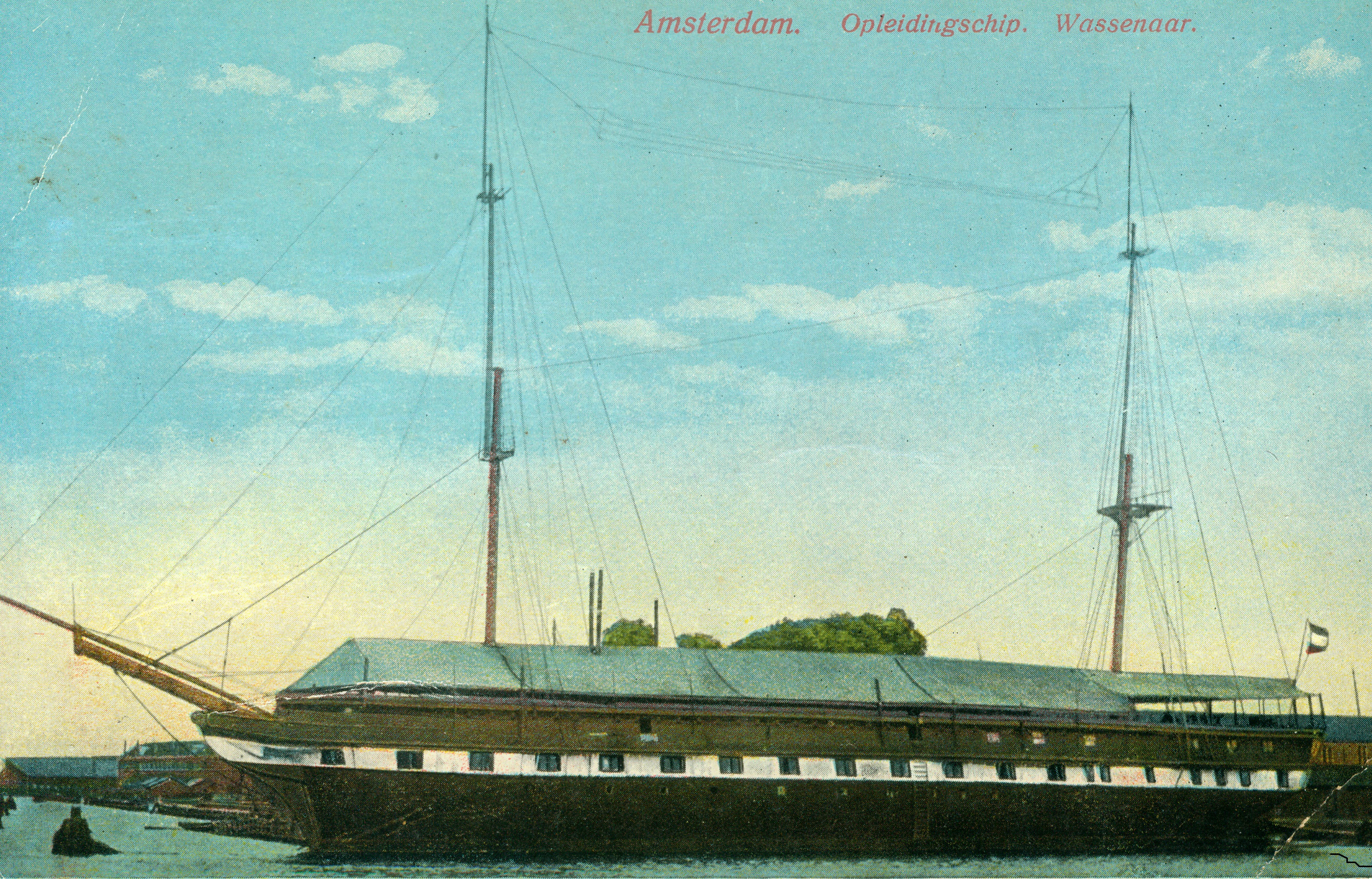Admiraal van Wassenaar
An item reported that at Willemsoord, Netherlands a so-called Perfidies [yard division] commanded by lieutenant 1st class Zegers Rijser adjutant of the queen was to be founded and which was part of the navy yard there. The intention was to train the stokers for the Royal Netherlands Navy. For this purpose were the corvette Hr. Ms. Sommelsdijk (1) and two gunboats available. The Zr. Ms. Wassenaer was used for training young sailors.(s)
Notes
1. screw steamship 4th class, call sign GQVD, laid down at the naval yard at Amsterdam, Netherlands on9 July 1881, launched on 15 November 1892, commissioned on 16 August 1884, classified as corvette on 12 May 1893, fitted out as accommodation ship for sailors and added to the Hr. Ms. Het Loo, commissioned on 31 May 1905, later added to the Hr. Ms. Atjeh, decommissioned in March 1912 and transferred to the naval yard at Amsterdam to be fitted out as fishery patrol which was however never realized and finally sold in 1914. Dimensions 45,00-53,60 x 9,00 x 3,60 metres, displacement 850 tons, horsepower 750 ihp, speed 11,43 miles, her crew numbered 88 men and an armament of 1-15cm gun and 3-12cm guns. Iron-built wood planked. Building costs when first fitted out ƒ 614.715,00.
2. Screw steam frigate Admiraal van Wassenaar, call sign GQBE, laid down at the navy yard at Amsterdam, Netherlands as the 74 gun ship of the line Piet Hein 15 February 1833, disassembled 1850, laid down as a screw steam frigate designed by A.E. Tromp 1853, launched as the Admiraal van Wassenaar 6 September1856, commissioned 16 July 1857, converted into a training ship at the navy yard of Amsterdam 1875, commissioned for training boys and ordinary seaman 11 April 1876, until 1 January 1913 used as training and guard ship at Amsterdam and sold on 28 May at Amsterdam for ƒ 37.781,00 to be broken up, displacement 3.650 tons, dimensions 62,36 (between perpendiculars)-72,86 (over all0 x 15,72 x 6,80 metres, horsepower 300 hp, speed maximum 10,67 miles, armament 8 (4 medium 30pd guns, 4-12cm guns, 1877: long 12pd guns)-45 guns and a crew numbering 450 men. On 1 October 1876 were 335 boys trained divided over 4 groups, the youngest (group 1) numbered 108 boys, groups no.2-4 respectively 103, 60 and 64.

